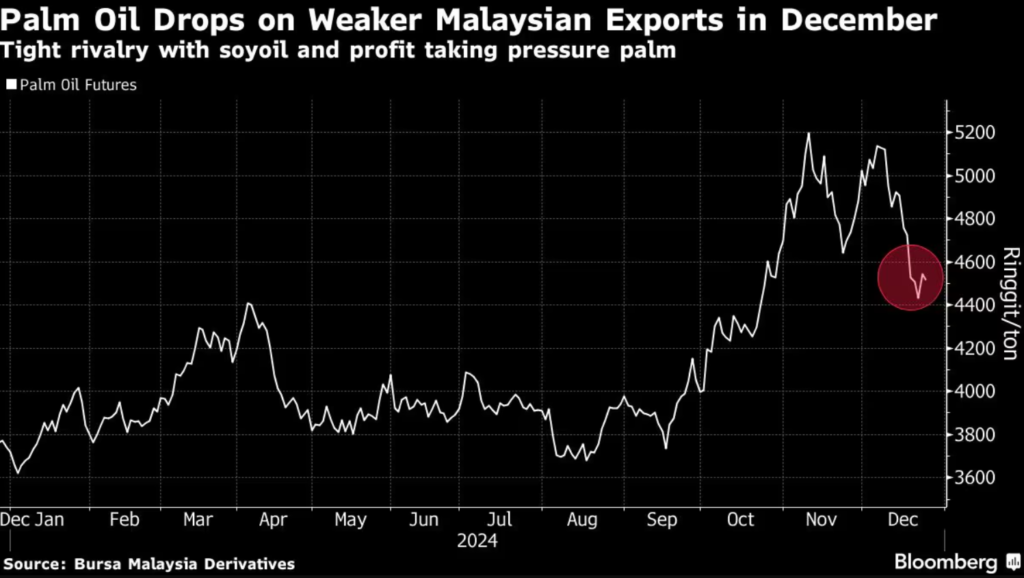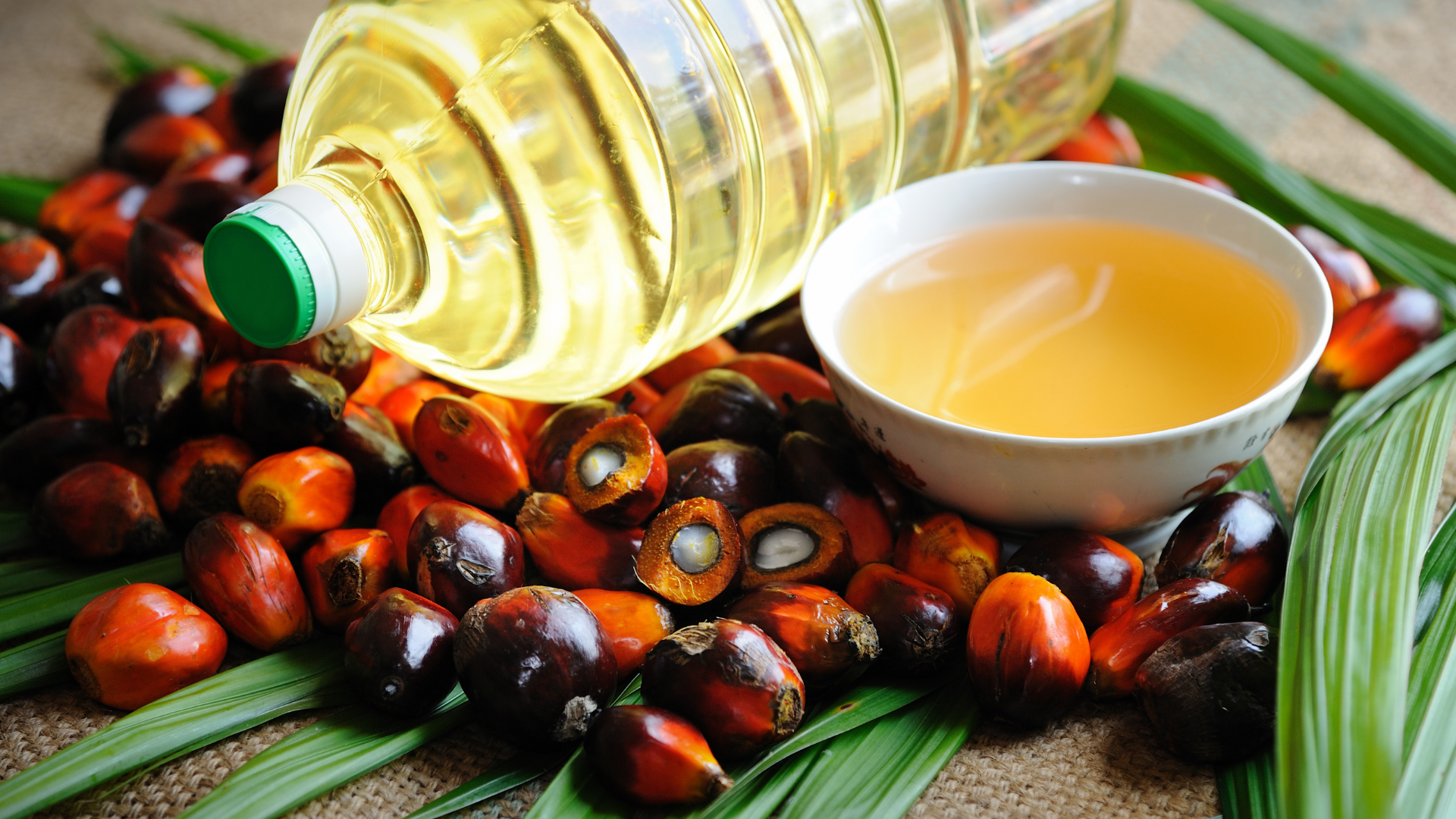Palm oil prices dipped as Malaysia’s exports continued to slump, signaling weaker global demand. Shipments from Malaysia, the second-largest producer, fell 5.2% in December compared to the prior month, reflecting softer buying interest from top consumers like India and China. Export weakness combined with growing stockpiles has intensified pressure on the edible oil market.
Adding to the decline, palm oil faces rising competition from soyoil, which has gained favor in key markets due to competitive pricing. Global soybean supplies remain robust, keeping soyoil prices lower and drawing demand away from palm oil. This dynamic has added strain to Malaysian producers already grappling with falling prices.

Analysts suggest the disparity between palm oil and soyoil prices could persist into early 2025 if export conditions fail to improve. The widening gap between the two edible oils has forced palm oil exporters to cut prices further to stay competitive. Market uncertainty and fluctuations in crude oil prices also weigh on sentiment.
The outlook for palm oil remains cautious as buyers continue to opt for cheaper alternatives. While there are hopes for a demand recovery in the first quarter, Malaysia’s sluggish exports and competition from other vegetable oils could limit the rebound, keeping prices under pressure in the near term.
















